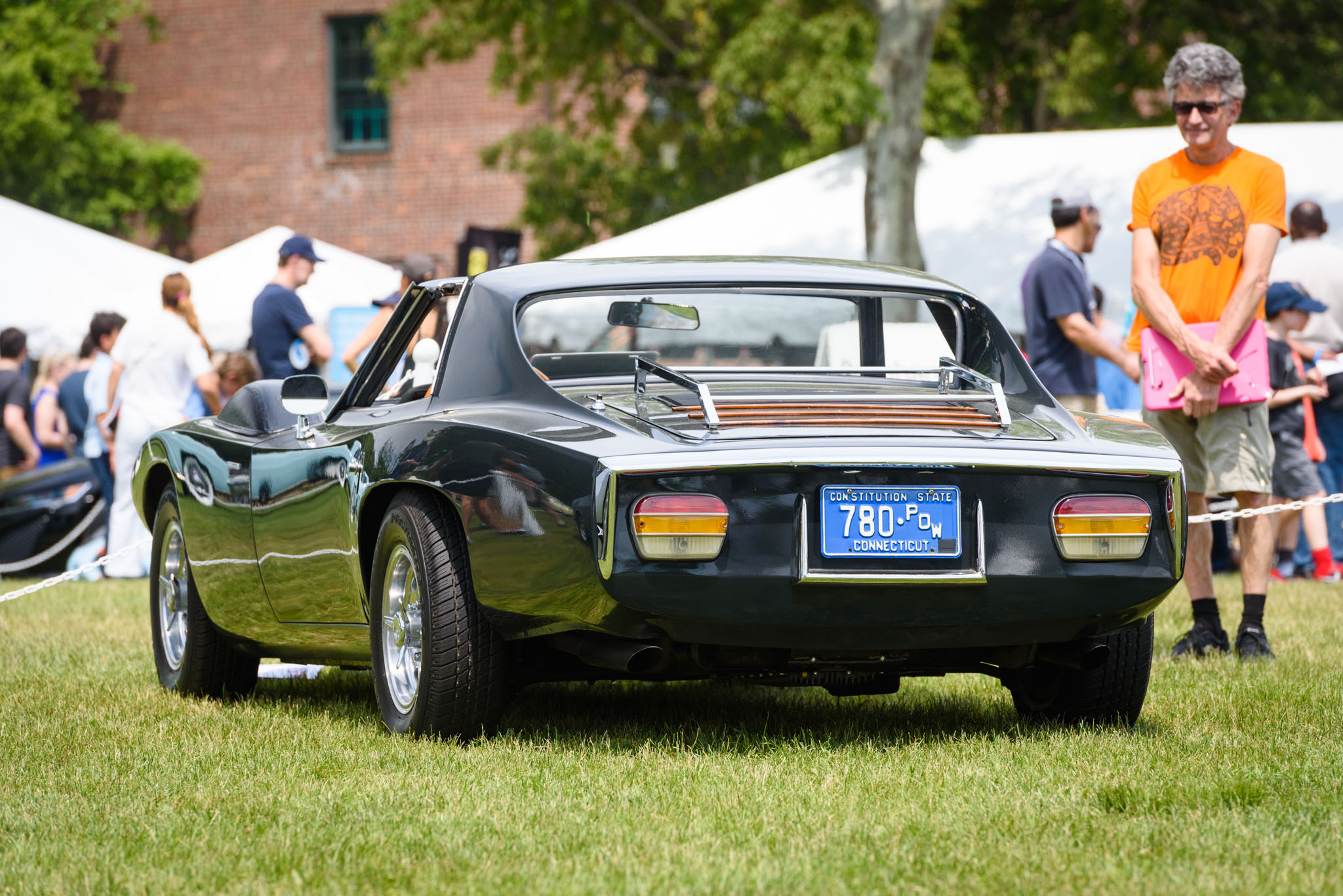The cars of celebrated driver John Fitch get their own celebration at Greenwich
John Cooper Fitch stuffed a lot of living into his nine decades on this earth, including U.S. Army Air Corps bomber and P-51 pilot during World War II, racing at Le Mans in the early 1950s, acting as a Chevrolet Corvette test driver, to inventing the Fitch Inertial Safety Barrier that is now in widespread use on American freeways. Along the way he also amassed an assortment of cars that he personally designed or modified to his own specification, and those cars were celebrated at the recent Greenwich Concours d’Elegance, fittingly held in Fitch’s home state of Connecticut.
Fitch was present at the creation of American sports car racing, driving in the earliest races at long-lost places like Bridgehampton and in the street races at Elkhart Lake and Watkins Glen, before those events moved to permanent circuits. The pairing of Fitch and the Greenwich Concours nicely dovetailed with the event’s main attraction, a gathering of all of the cars built by Briggs Cunningham, another celebrated son of Connecticut.
Besides a number of cars that Fitch drove for Cunningham, the field included the 1950 Fitch-Whitmore Special, a rebodied Jaguar XK-120 that Fitch raced in 1951, a brace of Fitch-modified GM cars from his later years as a consultant to the automaker, and the Fitch Phoenix, a one-off sports car that Fitch built in 1966 off the Chevy Corvair platform.
If you Google John Fitch, three names come up, starting with Fitch’s 18th-century ancestor, John Fitch, inventor of the steamboat; followed by mixed martial arts fighter Jon Fitch; then our John Fitch—racer, pilot, major principal in the establishment of Lime Rock Park, and by all accounts, a perfect gentleman from an earlier age. Fitch passed away in 2012 at the age of 95, but thankfully for racing enthusiasts and ordinary freeway drivers, he left far more behind than just a tombstone.
1950 Fitch Whitmore Special

John Fitch somehow convinced his friend Coby Whitmore, then famous for his Saturday Evening Post cover illustrations, to strip down Whitmore’s Jaguar XK120 and make it a race car. The body is hand-formed aluminum, said to be 800 pounds lighter than the stock Jaguar. Driven by Fitch, the car won its class and finished fourth overall in its first race at Bridgehampton in 1951.
1962 Corvair Monza Fitch Sprint

As a consultant to General Motors, Fitch was fascinated by the rear engine Chevrolet Corvair, having a chance to drive prototypes as early as 1959. He developed various engine, chassis, and body modifications for a car that was later notoriously killed by bad publicity from Ralph Nader (but in reality, was mainly killed by the Ford Mustang). These options were then installed either at Fitch’s workshop or at an authorized Chevrolet dealer, thus turning an ordinary Corvair into the Fitch Sprint.
1965 Corvair Corsa Fitch Sprint

Fitch was in the Corvair-modifications business for 10 years before selling the operation in 1971. Besides upgrades such as a four-carb induction that bumped the horsepower from 102 to 140, Fitch also developed special coil springs, a tuned muffler, fast-ratio steering, a short-throw shifter, various appearance items, and the so-called “Ventop,” a fiberglass fastback roof add-on for the Corvair coupe.
1966 Corvair Corsa Fitch Sprint

By 1966, the list of Fitch part numbers for the Corvair had grown long and included Koni shock absorbers, high performance brake pads, a hydraulic steering damper, various instruments, Lucas Flamethrower headlights, and wood steering wheels and shifter knobs. These options could be installed at Fitch’s workshop in Falls Village, Connecticut, or at an authorized Chevrolet dealer. The owner of this Fitch Sprint received it as a high school graduation present.
1966 Fitch Phoenix

Again teaming up with friend and illustrator Coby Whitmore, Fitch poured all of his Corvair knowledge into the Phoenix, a two-seat sports coupe based around the then-new 140-horse Corsa engine available in the 1965 Corvair. Weber carbs raised the horsepower to 170, while Intermechanicca Group in Turin crafted the body out of steel. Fitch planned to build 500 copies, but because of increasing vehicle regulations and the impending demise of the production Corvair—and also possibly the realization that profit would never happen—only one Phoenix was ever produced.
1966 Oldsmobile Toronado Fitch Phantom

One of the two Fitch Phantoms built and the only survivor, the two-tone Phantom was Fitch’s attempt to do to the luxurious new Bill Mitchell-designed Oldsmobile Toronado what he had done to the Corvair. The car was shipped from the dealer to his shop where the shocks, exhaust system, and brakes were upgraded, along with some interior and exterior modifications that included an 80,000-candlepower driving light. Horsepower was said to be up to 405 because of the low restriction exhaust, and Fitch was way ahead of his time in developing seats with motorized fans to blow cool air through them as well as modifying the shifter mechanism for the automatic transmission to make it much more controllable manually by the driver. However, the mods added $2000 to the price of the already expensive $4600 Toronado (today that’s like adding $15,505 to $35,660), and the market never developed.
1967 Pontiac Fitch Firebird

One of the two first-gen Firebirds given to GM consultant Fitch to develop into a GT proposal, this is the only one built with Pontiac’s then-novel overhead-cam inline six. Fitch did various suspension and interior mods to the so-called “FitchBird” and added his trademark fastback look with rather strange buttress-like sail panels hitched to the rear quarters. But ultimately Pontiac division chief John Z. DeLorean went with another proposal called the Trans Am, and the rest is history.













